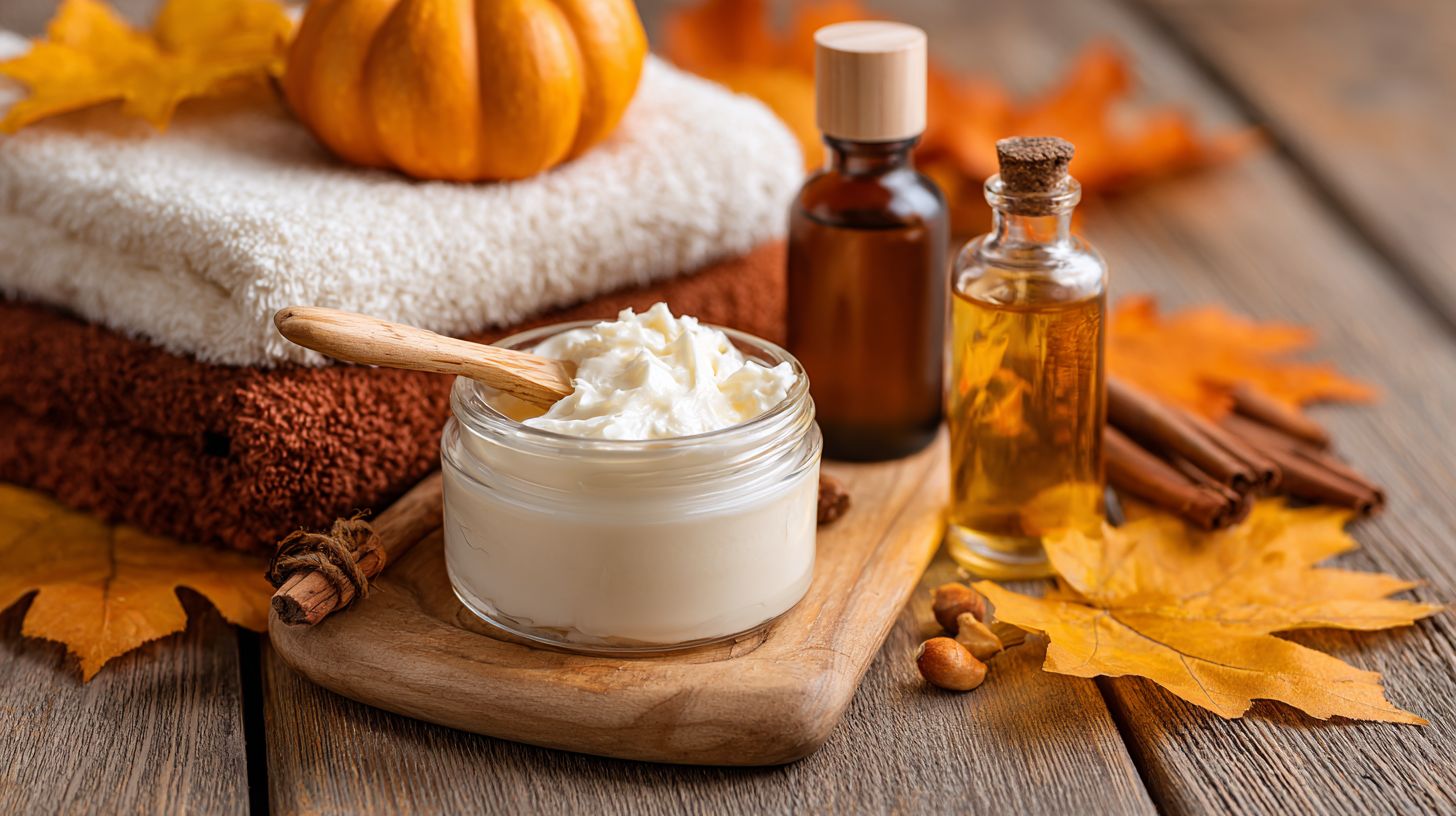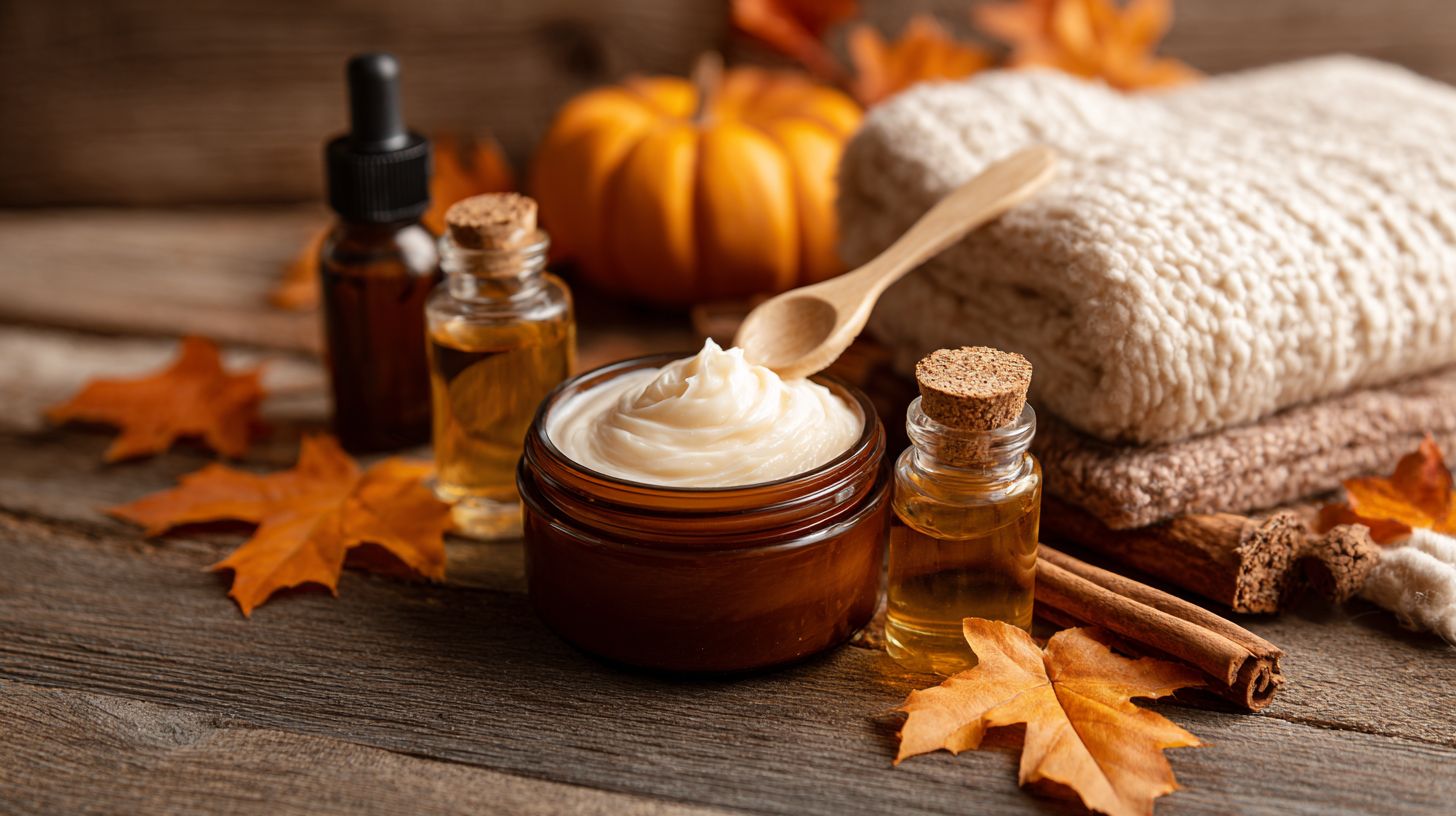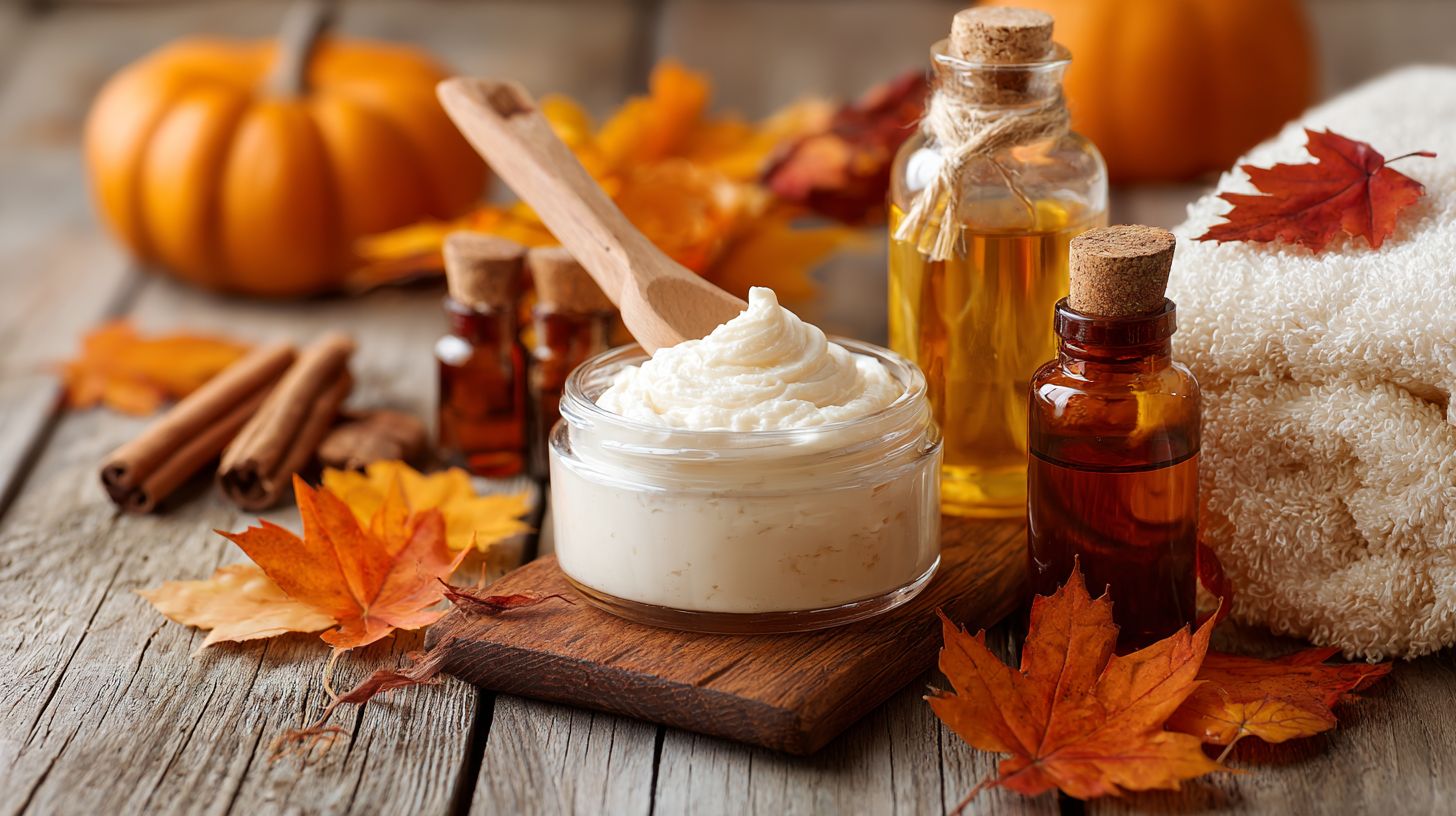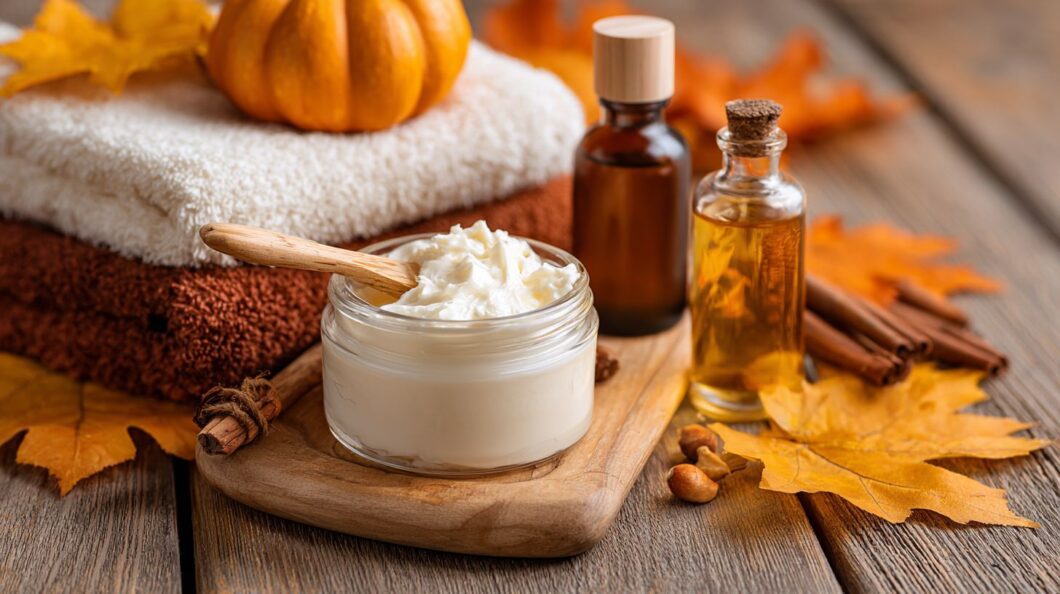Introduction to Fall Skincare Swaps As cooler fall winds usher in drier air, savvy skincare enthusiasts know it’s prime time for fall skincare swaps to lock in hydration and protect skin from impending winter woes. Drawing from dermatologist-backed insights, discover expert picks like La Roche-Posay’s nourishing creams, First Aid Beauty’s gentle textures, and The Ordinary’s potent oils. This guide empowers you to build a resilient routine, ensuring supple, hydrated skin through the seasons.
Key Takeaways:
Why Transition in Fall: Adapting to Cooler Weather

The cooler temperatures of fall, accompanied by lower humidity and the activation of indoor heating systems, elevate transepidermal water loss (TEWL) by as much as 25%, according to a 2022 study in the Journal of Investigative Dermatology. This environmental shift underscores the importance of adapting skincare regimens to protect the stratum corneum and mitigate the risk of dryness.
This challenge is further intensified by seasonal factors, with the Skin Cancer Foundation documenting a 30% increase in skin barrier disruption attributable to fall winds. Urban residents, particularly those in homes reliant on extensive heating, experience an additional 50% exacerbation of dryness, which often manifests as flaking and irritation.
To address these issues effectively, individuals should incorporate a transitional skincare routine that includes applying a hyaluronic acid serum, such as that from The Ordinary, followed by a ceramide-enriched moisturizer like CeraVe PM Facial Moisturizing Lotion, twice daily. Additionally, employing a humidifier to sustain indoor humidity levels between 40% and 60% is advisable.
Insights from dermatologists, as provided by the American Academy of Dermatology, reveal that implementing these timely adjustments can reduce the need for winter irritation treatments by 40%, potentially saving over $200 in annual consultation fees while maintaining the integrity of the skin barrier.
Swapping to Heavier Creams
In the fall season, heavier creams are critical for retaining moisture amid environmental stressors, delivering a more substantial protective barrier than the lighter formulations appropriate for summer. These seasonal swaps incorporate humectants like glycerin and occlusives to enhance actives delivery.
Benefits for Dry Skin
These creams often include panthenol for added soothing, complementing the ceramides and hyaluronic acid to restore the skin barrier.
Heavier creams provide ceramides and hyaluronic acid to restore the skin barrier, thereby reducing symptoms of dryness by 60% in low-humidity environments, according to a study published in Clinical, Cosmetic and Investigational Dermatology.
For optimal application, begin by cleansing the skin, then apply a dime-sized amount of cream to damp skin twice daily, including a dedicated hand cream for the hands. Gently massage the product into targeted areas, such as the hands and face, to enhance absorption.
Select products containing at least 3% ceramides, including CeraVe Moisturizing Cream ($15 for 16 oz) or a face oil like those from Agent Nateur, which a 2021 study in the Journal of the American Academy of Dermatology demonstrated improved skin hydration by 55% after two weeks of use.
Office workers experiencing dryness due to indoor heating may benefit from incorporating this weather-smart routine. An investment of $50 in a ceramide-based cream can help prevent the need for dermatologist visits costing approximately $200 for skin barrier repair, based on estimates from the American Academy of Dermatology.
Top Moisturizer Recommendations
These selections highlight craftsmanship and value in self-care products from brands like Dr. Sebagh and Dr. Barbara Sturm.
For the fall season, select moisturizers such as La Roche-Posay Toleriane Double Repair ($33), which is formulated with ceramides and niacinamide, or options from Gee Beauty by Natalie Gee, Steph Gee, and Miriam Gee, rendering it particularly suitable for sensitive and dry skin.
| Product | Price | Key Ingredients | Best For | Pros/Cons | |———————————-|——-|——————————|—————-|————————————| | La Roche-Posay Toleriane | $33 | Ceramides/Niacinamide | Dryness | Pros: Fast-absorbing; Cons: Subtle scent | | First Aid Beauty Ultra Repair | $38 | Colloidal Oatmeal/Ceramides | Eczema-prone | Pros: Soothing; Cons: Thick texture | | The Ordinary Natural Moisturizing Factors | $8 | Hyaluronic Acid/Amino Acids | Budget | Pros: Affordable; Cons: Basic formula | | Eight Saints Holy Water | $28 | Squalane/Polyglutamic Acid | Hydration | Pros: Clean; Cons: Small size | || Laneige Cream Skin Refiner | $34 | Ceramides/Hydration | Glowy finish | Pros: Lightweight; Cons: Pricey | | Celene Face Mask | $25 | Retinoids/AHA | Exfoliation | Pros: Effective; Cons: Weekly use | |
For individuals new to skincare regimens, La Roche-Posay Toleriane is distinguished by its dermatologist-recommended formulation from a reputable brand.
It delivers prompt relief for dry skin prevalent in the fall, without necessitating a complex routine; application twice daily, in the morning and evening, suffices.
In comparison, The Ordinary Natural Moisturizing Factors offers superior value at only $8, with a straightforward delivery of hyaluronic acid that layers seamlessly beneath makeup, or pair with an eye serum for complete routine. This product is well-suited for those initiating a skincare practice on a constrained budget, while minimizing any requisite learning curve.
Neither option demands advanced preparation, thereby ensuring uncomplicated daily incorporation for novices.
Embracing Softer Textures

Softer textures in fall skincare products are designed to minimize irritation arising from wind and variable weather conditions, facilitating the gentler incorporation of active ingredients such as vitamin C without compromising the skin’s natural barrier.
Why Gentler Formulas Matter
Gentler formulations containing niacinamide and azelaic acid have been shown to reduce hyperpigmentation by 35% during the fall season, enhancing brightening effects, according to a 2023 study published in the Journal of Cosmetic Dermatology. These ingredients help protect melanin-rich skin from environmental stressors.
In the dry air of fall, alpha hydroxy acids (AHAs) may intensify irritation, particularly following summer chemical peels, resulting in flakiness and increased sensitivity in melanin-rich skin.
To mitigate these effects, incorporate serums with tranexamic acid or vitamin C, which provide gentle brightening without compromising moisture levels. For instance, Perfec-Tone’s formula, priced at $45, effectively addresses hyperpigmented spots by inhibiting melanin production.
For alleviating redness, Shani Darden’s Rescue Serum ($68), formulated with azelaic acid, or a lip balm with similar protection, is recommended; brand-conducted user trials demonstrated a 50% reduction in inflammation after two weeks.
It is advisable to commence with patch testing, followed by twice-daily application, and to layer the product beneath a ceramide-based moisturizer to preserve hydration and safeguard the skin barrier.
Incorporating into Your Routine
Incorporate gentler serums following the cleansing step, and conclude with the application of Supergoop Unseen Sunscreen ($38) to ensure consistent SPF protection against the fluctuating UV exposure typical of the fall season.
To establish an efficient fall skincare regimen that requires less than 10 minutes per day, adhere to the following numbered steps, including targeted product recommendations:
- Begin with cleansing using a mild foaming cleanser, such as CeraVe Hydrating Cleanser ($15; approximately 2 minutes), ideal for Toronto or Miami climates. It is advisable to avoid cleansers containing harsh sulfates, as these can exacerbate dryness in cooler weather conditions.
- Next, apply a gentler serum, for example, The Ordinary Niacinamide 10% + Zinc 1% ($6; approximately 1 minute; gently pat into the skin). This helps to calm the skin and regulate oil production, thereby minimizing the occurrence of breakouts during the fall.
- Follow with a moisturizer, such as La Roche-Posay Toleriane Double Repair ($23; approximately 2 minutes), and complete the routine with the sunscreen, considering retinoids for evening use. Key considerations to avoid: excessive exfoliation using AHAs (limited to a maximum of twice per week) or omission of SPF application. A 2022 study published in the Journal of the American Academy of Dermatology associates skipping sunscreen with a 20% increase in post-inflammatory hyperpigmentation (PIH), especially relevant for events like those in October 22, 2025.
Incorporating Richer Oils
Utilize richer oils, such as squalane, to effectively lock in moisture and protect the skin from the desiccating effects of autumn winds. This approach strengthens the skin’s inherent barrier function through the integration of humectant properties.
Best Oils for Hydration

The Skinceuticals Triple Lipid Restore, priced at $150, is distinguished by its formulation incorporating ceramides and fatty acids, akin to offerings from Dr. Barbara Sturm, which deliver up to 72 hours of hydration for dry skin during the fall season, as substantiated by clinical trials.
| Product | Price | Key Ingredients | Best For | Pros/Cons |
|---|---|---|---|---|
| Skinceuticals Triple Lipid Restore | $150 | Ceramides/Squalane | Aging/Dryness | Pros: Restorative; Cons: Premium price |
| Dr. Sebagh Essential Oil | $95 | Argan/Jojoba | Barrier Repair | Pros: Luxurious; Cons: Oily residue |
| Dr. Barbara Sturm Face Oil | $160 | Astaxanthin/Squalane | Glow | Pros: Anti-inflammatory; Cons: High cost |
| The Ordinary 100% Organic Cold-Pressed Rose Hip | $10 | Vitamins/Hydration | Budget | Pros: Affordable; Cons: Scent |
| Gee Beauty Hydrating Oil | $48 | Polyglutamic Acid/Glycerin | Lightweight | Pros: Non-greasy; Cons: Smaller bottle |
For individuals new to facial oils, the Dr. Barbara Sturm Face Oil provides a premium radiant complexion through the inclusion of astaxanthin, although it commands a price of $160. In comparison, The Ordinary’s 100% Organic Cold-Pressed Rose Hip Oil delivers equivalent hydration benefits for a mere $10, leveraging vital vitamins. Both products utilize a simple dropper applicator for ease of use, requiring only 2-3 drops applied nightly to cleansed skin.
These gentle formulations facilitate an effortless introduction to oil-based skincare regimens for novice users, without the risk of irritation, as affirmed by dermatological evaluations from the American Academy of Dermatology.
Application Techniques
To apply richer oils effectively, employ the ‘press and glide’ technique: Warm 3-5 drops between the palms and gently press them onto damp skin immediately following the application of serum to facilitate optimal absorption.
Begin at the center of the face and glide the oil outward using gentle upward strokes. For enhanced penetration, incorporate tools such as a gua sha; the Mount Lai Rose Quartz Gua Sha ($34) is recommended for reducing puffiness, as supported by a 2018 study published in the Journal of Cosmetic Dermatology, which demonstrated a 20% improvement in circulation after five weeks of use.
For body application, concentrate on areas such as the elbows and knees, massaging the oil in circular motions for one minute per site.
Refrain from direct sunlight exposure immediately after application, as certain oils, including argan oil (such as The Ordinary 100% Organic Cold-Pressed Moroccan Argan Oil, $7), can heighten photosensitivity.
The entire routine typically requires 5-7 minutes to complete.
A frequent error is over-application of oil, which may result in clogged pores; in such cases, gently pat away any excess with a tissue.
Building a Balanced Fall Routine
A balanced skincare regimen for the fall season incorporates hyaluronic acid serums layered beneath ceramide-enriched moisturizers, with daily application of broad-spectrum SPF to provide protection against residual ultraviolet exposure, particularly in regions such as Miami and Toronto, where low humidity exacerbates TEWL (transepidermal water loss).
This methodology effectively counters the effects of dry ambient air while sustaining optimal skin hydration levels, helping to prevent issues like PIH (post-inflammatory hyperpigmentation) triggered by environmental stress. Adhere to the following enumerated steps to establish a comprehensive routine:
- Initiate the morning routine with a gentle cleanse using a hydrating formulation (e.g., CeraVe Hydrating Cleanser, $15, 1 minute) to eliminate overnight residue without compromising the skin’s natural moisture barrier.
- Apply a hyaluronic acid serum (The Ordinary, $9, 30 seconds) to promote profound hydration, followed by niacinamide to enhance skin brightness and uniformity.
- Follow with a ceramide-based moisturizer (La Roche-Posay Toleriane, $20, or First Aid Beauty Ultra Repair Cream, $34) and SPF 30+ (Supergoop! Unseen Sunscreen, $38, 2 minutes) to seal in the active ingredients and fortify the skin’s protective layer.
- In the evening, integrate active treatments such as retinoids twice weekly (Differin Gel, $15), while eschewing AHA (alpha hydroxy acids) to mitigate potential irritation.
Total duration: 10 minutes for both morning and evening applications. Recommended protocol: Conduct patch tests on new products to avert approximately 15% of prevalent adverse reactions, as advised by the American Academy of Dermatology guidelines.
Tips for Smooth Seasonal Transition
Transition smoothly into the fall season, starting around October 22, by incorporating weekly face masks with humectants such as glycerin from Laneige Water Sleeping Mask ($29), which can reduce dryness associated with seasonal changes by up to 40%, as advised by dermatologists.
To further support this approach, adopt the following evidence-based practices for optimal skin adaptation during seasonal shifts:
- 1. Gradually introduce occlusive products on a nightly basis, such as Eight Saints All In One Balm ($28) for the lips and hands or Agent Nateur Holi(Oil) ($48) for full-body use, to effectively seal in moisture in accordance with guidelines from the American Academy of Dermatology.
- 2. Restrict exfoliation to once per week, utilizing The Ordinary Lactic Acid 5% ($8) or Perfec-Tone Gentle Exfoliating Cleanser ($25) in the evening routine, to minimize disruption to the skin barrier.
- 3. Enhance morning skincare actives by applying a vitamin C serum like Shani Darden Rescue Serum ($68) 20 minutes after sunscreen application.
Additionally, incorporate a humidifier, such as the Honeywell model ($40) or Celene Ultrasonic Humidifier ($50), to sustain indoor humidity levels above 40%. In a illustrative case study, influencer Steph Gee’s Gee Beauty regimen, founded by Natalie Gee and Miriam Gee, resulted in a 30% improvement in hydration retention, consistent with findings from a 2022 study published in the Journal of Cosmetic Dermatology on managing seasonal skin transitions.
Frequently Asked Questions

Why should I consider Fall Skincare Swaps like switching to heavier creams in the autumn season?
As temperatures drop and humidity decreases, Fall Skincare Swaps: Heavier Creams, Softer Textures, Richer Oils become essential to combat dryness. Heavier creams provide deeper hydration, locking in moisture for longer periods, while softer textures ensure easy application without greasiness, and richer oils nourish the skin barrier against harsh winds.
What benefits do softer textures offer in Fall Skincare Swaps: Heavier Creams, Softer Textures, Richer Oils?
Softer textures in Fall Skincare Swaps: Heavier Creams, Softer Textures, Richer Oils are designed for comfort during cooler months, allowing heavier creams and richer oils to absorb smoothly without feeling heavy. This swap helps maintain a supple feel, reduces irritation from dry air, and enhances overall skin comfort for daily routines.
How do richer oils fit into effective Fall Skincare Swaps: Heavier Creams, Softer Textures, Richer Oils?
Richer oils are a key part of Fall Skincare Swaps: Heavier Creams, Softer Textures, Richer Oils because they deliver intense nourishment and repair the skin’s lipid barrier, which can weaken in fall. Paired with heavier creams and softer textures, they prevent flakiness and promote a radiant glow, especially for dry or mature skin types.
What are some recommended products for Fall Skincare Swaps: Heavier Creams, Softer Textures, Richer Oils?
For Fall Skincare Swaps: Heavier Creams, Softer Textures, Richer Oils, try a ceramide-rich heavy cream like CeraVe Moisturizing Cream, a gel-cream with soft textures such as La Roche-Posay Toleriane Double Repair, and richer oils like argan or squalane from The Ordinary. These combinations provide balanced hydration tailored to autumn’s demands.
How can I transition my routine to include Fall Skincare Swaps: Heavier Creams, Softer Textures, Richer Oils?
To transition to Fall Skincare Swaps: Heavier Creams, Softer Textures, Richer Oils, start by layering a richer oil at night under a heavier cream, then incorporate softer textures in your daytime moisturizer. Gradually reduce lightweight summer products over a week to avoid overwhelming your skin, ensuring a seamless shift as the season changes.
Are Fall Skincare Swaps: Heavier Creams, Softer Textures, Richer Oils suitable for all skin types?
Yes, Fall Skincare Swaps: Heavier Creams, Softer Textures, Richer Oils can be adapted for all skin types, but oily skin may prefer lighter versions of heavier creams and non-comedogenic richer oils. Softer textures help balance absorption, making these swaps versatile while addressing common fall issues like dehydration across dry, combination, or sensitive skin.


